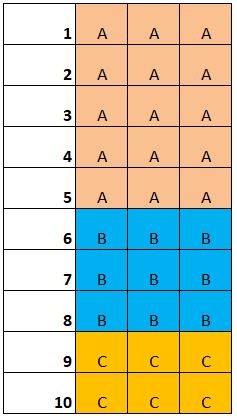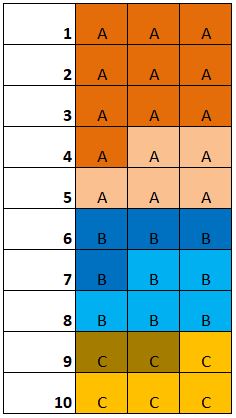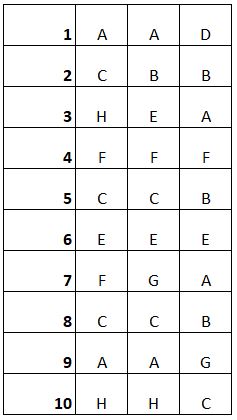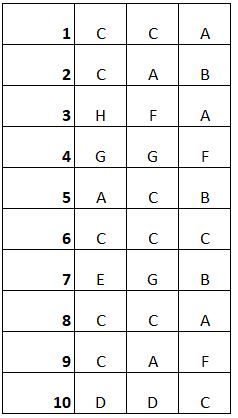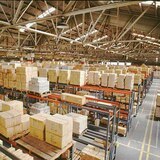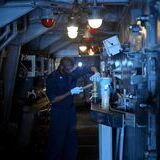Methods for storage bins management in the warehouse
There are two existing methods for the management of the storage bins of incoming goods in a warehouse:
- Fixed location system: in this type of warehouse, each reference has assigned a preset bin which is fixed.
- Chaotic or random location system: in this variant, the reference which enters to the warehouse can be stored in every bin which has no material.
Fixed location system warehouses
It's the easiest management method, which consist of assigning one or more bins to a certain article, meaning that in those specific bins the item or reference mentioned will be the only one allowed to be stored.
Down below the most important advantages and disadvantages of this kind of warehouse are explained:
Advantages
- Locating and identifying of the references is very easy: as the bins are fixed prolonged in time and being usually organized by product families, operators of the warehouse will find thousands of different items without additional information.
- Easy visual inspection for the stock level: having preset bins makes it easy for the operator to control the stock level visually.
- Related articles are located close: when the warehouse is designed it neede to be taken into account related items disposal in order to make it easier the order picking.
- Even without an optimization system for order picking, it can be almost optimal if the references which have high turnover have assigned storage bins near the picking area.
Disadvantages
- Space is used innefficiently: As the fixed bins assigned must be dimensioned with the maxium stock capacity for that reference, usually there will be free storage bins in the warehouse. This is much more visible in the case of products which have a variable demand or seasonal.
- Limited flexibiliby for adding new references: As all the storage bins are in a fixed order following certain criteria, if a new reference is added, it's necessary to free up some spaces for it, which disrupts the existing designed sequence.
Let's see an example of a warehouse with a fixed location system. We know that we have 30 storage bins for containers that are distributed in 10 lanes, 3 storage bins per lane in which the mentioned containers will be stored in the floor. Three references are produced in the facility and the daily production mix is:
- 50% units of A
- 30% units of B
- 20% units of C
Due to this reason storage bins should be assigned taking into account this proportion and will be:
- 15 storage bins for A
- 9 storage bins for B
- 6 storage bins for C
The layout would be as showed below:
Therefore, for the warehouse operator it should be very easy to memorize that for lanes 1 to 5 there's reference A, for 6 to 8 B, and for 9 and 10 C.
Let's imagine also that operator needs to review the levels of stock that are shown in the following image in a darker shade. With only having a walk from lanes 1 to 10 he will realize that there are:
- 10 units of A
- 4 units of B
- 2 units of C
The order picking will also be easy as all the references of the same type (A, B or C) are very close.
However, let's imagine that 3 more references need to be added, with these clarifications:
- References A, B and C have a fixed demand.
- New references D, E and F have a variable demand, and it's forecasted that there will be several months in which 4 storage bins will be needed and others in which only 1. This type of warehouse needs to be dimensioned taking into account maximum stock so there should be 4 bins per reference meaning that we would have difficulties to get them with this kind of management.
Therefore, here is demonstrated the complicated task of adding new references that disrupt the initial design of the warehouse. In addition to this, the operator will need to re-learn the new lanes and the more references are, the more difficult is to find them, taking more time. It would also be observed a great percentage of free storage bins.
Chaotic or random location system warehouses
With the warehouses with chaotic or random location system the relationship between reference and storage bin is eliminated because goods will be able to be stored in any storage bin which is free.
The advantages and disadvantages of this kind of management are below explained:
Advantages
- High utilisation of the space in spite of variable stock levels.
- Great flexibility to add new references, having the only condition of having free storage bins.
Disadvantages
- It requires an advanced system for stock control in the storage bins to check the stock levels.
- The order picking routes need to be generated with an specific system or as of a codification for the storage bins according to standard routes.
- To look for the references needed, operator needs to check previously in the information system where it's allocated. Also the identification of the products requires more time as it's not associated with a certain storage bin.
- It requires of quick and complete updates in the inventory transactions because if this is not done, the information will be useless for the warehouse operator.
Let's imagine that if we have a variable demand of 8 references (A, B, C, D, E, F, G, H) but globally it's fixed, this is, the sum of all the demands is constant over the year. If we had a warehouse with a fixed location system it would be very complicated to manage and for dimensioning it, we would need to take into account the maximum stock level for each reference in the momento of maximum demand, which means that a lot of storage bins would be needed. The solution here would be to have a warehouse with a chaotic location system which will exploit the 30 storage bins available. Therefore, from one day to another we would find very different references in each lane of the warehouse.
Assuming that we had all the storage bins occupied, for example on Monday, first day of the week, we could find in the warehouse the following layout:
On Wednesday, however, the situation could be much more different, as shown below:
It has to be taken into consideration that what has been explained in this post is only a pragmatic example to show the concep of chaotic, nonetheless, as it will be presented in another post, the storage bins in the warehouse should be classified according to Pareto rule or ABC analysis by accessibility.
Considering that this warehouse has a chaotic location system:
- The operator that is in charge of feeding with material the production line must use a PDA so that he/she is able to read the production label for the reference to be located and afterwards assigns the storage bin making a link with the reference and feeding a database system.
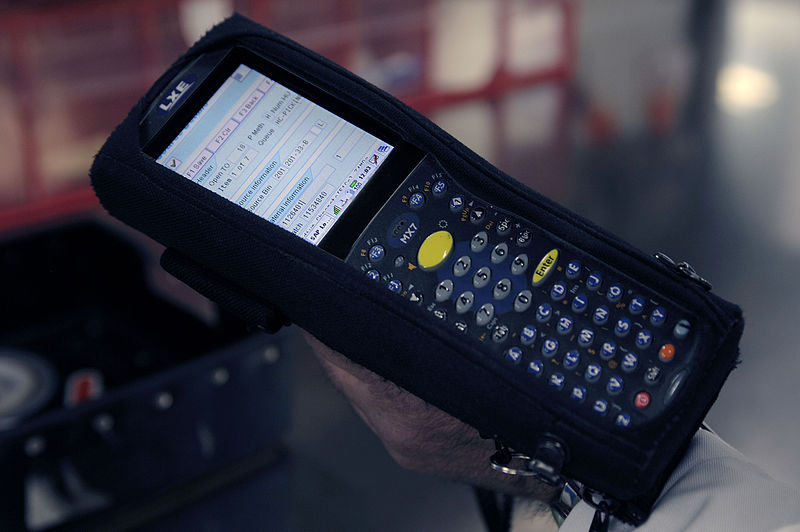
- The operator who is in charge of making the shipments of the goods, will need to check the database and search the reference that is needed to be shipped and this system will show to him/her the different storage bins in which it's allocated and when he/she chooses the storage bin from which he/she is going to take the goods, the production label will need to be read so that it's "deducted" digitally that packaging unite of the chaotic warehouse.




